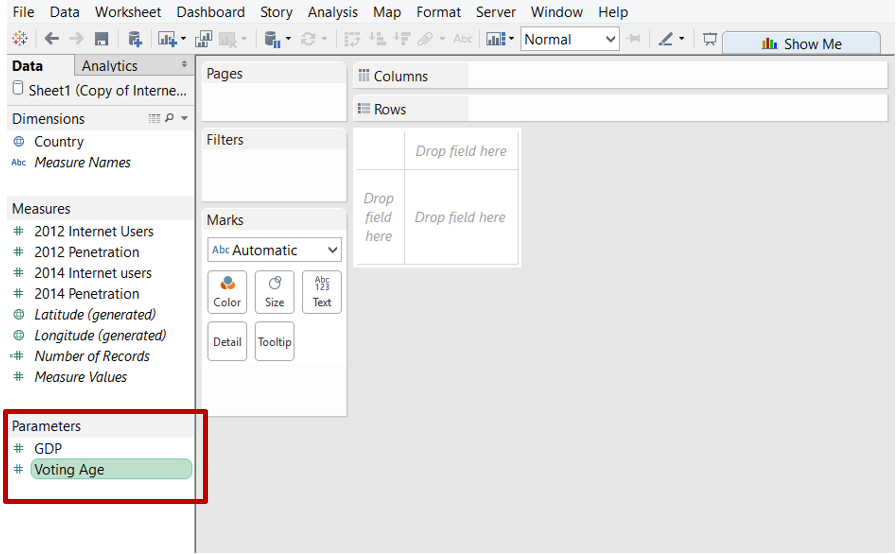The Tableau Performance Checklist series is designed to help you streamline your dashboard performance and Tableau Server configuration. Each post expands upon one item listed in the master Tableau Performance Checklist. As of 2024, you can find an updated Tableau Dashboard Performance Checklist here.
Here’s the next item on the Performance Checklist:
“Avoid row-level calculations involving parameters.“
Let’s first take a look at what row-level calculations are.
Row-Level Calculations
Row-level calculations, also known as record-level calculations, operate on every record in the underlying data. An example of a row-level calculation is an IF statement that does not aggregate, such as:
IF([Age] >= [Voting Age]) = THEN ”TRUE” ELSE “FALSE” END
When you are constructing your calculation, all of the parameters in your workbook will be listed in the Data window to the left of your screen:

Problems
We’ve just created a row-level calculation that uses a parameter. This seemingly simple calculation is going to hamstring the performance of our entire dashboard. Running a row-level query will take time, but running a row-level query against a parameter that has a significant variety of possibilities will add to that processing time exponentially.
Let’s assume that rather than using a single value for our parameter of 18, we instead tied it to a table of voting ages by country. There are currently 196 countries, and some countries have variable voting ages based on other criteria!
You can see just how expensive this little operation has become. Yes, parameters are very useful and add a helpful degree of flexibility for both you and your users, but you have to weigh the risk vs. reward. In this instance, it is far better to have a less versatile dashboard that will load in a reasonable time.
Mastering Best Practices
If you’re interested in becoming a Tableau Server guru, then learning these performance best practices is essential. Check back frequently as we add new posts and dive deeper into each point in the Tableau Performance Checklist.
Another great way to identify best practices is to leverage the insights offered by our Performance Analyzer, part of Workbook Tools for Tableau. It will examine all of your workbooks, worksheets, dashboards and data sources against a list of best practices to ensure that you’re using all the tips and tricks to guarantee your visualizations are moving at light speed.
As always, feel free to get in touch with us if you have any questions regarding performance or anything Tableau related! We’d be happy to help.

